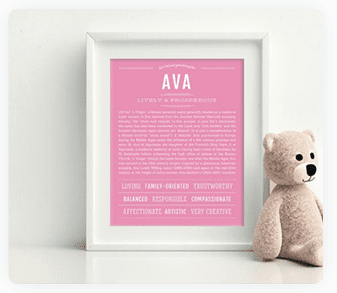Literary Characters
OF THE BABY NAME CLARE
Ophelia St. Clare is one of the characters in Harriet Beecher Stowe’s highly influential anti-slavery 1852 novel, Uncle Tom’s Cabin; or, Life Among the Lowly, which outsold everything in its day except the bible. Ophelia is the cousin of Augustine St. Clare, who “owns” the slave Tom. She serves to represent the ambiguity of what many white Americans felt about the issue of slavery at the time. Ophelia is essentially a God-fearing and pious woman, a staunch abolitionist who preaches about the evils of that institution. At the same time, she is, almost subconsciously, actually prejudiced against African-Americans. While spouting the rhetoric, she spurns the reality. Hailing as she does from Vermont, Ophelia has had little congress with them. It is only when she spends time in the South that she begins to understand that her initial distaste for the slaves was the result of ignorance and unfamiliarity on her part. Through the twists and turns of the plot, Ophelia comes to realize her own shortcomings and to understand, finally, that all people are just that first and foremost – people. This transformation opens up Ophelia’s heart and expands her horizons in a way that none of the pretty little speeches ever could.
Angel Clare is Tess’s husband and true love in the 1891 Thomas Hardy novel “Tess of the D’Urbervilles.” A freethinking rebellion, he rejects the conformist route of Cambridge University like his brothers and sticks to farming. He strives toward personal goodness and the nobility of man. Part of that includes him falling in love with Tess, a mere milkmaid and his social inferior. However, his notions of morality turn out to be conventional: he rejects Tess on their wedding night when she confesses that she isn't a virgin, even though he isn’t either. Eventually he is brought down to earth where his moral system is readjusted and realizes he’s been unfair to Tess. Ironically, it is not the angel who guides the human in this novel, but the human who instructs the angel, although at the cost of her own life.
Clare Abshire is the female protagonist in Audrey Niffenegger’s highly popular debut novel, The Time Traveler’s Wife, published in 2003, and made into a movie in 2009, with Rachel McAdams as the adult Clare. Clare has the (we think) misfortune to fall in love with a man who, well, time travels. This little peculiarity is explained as a genetic disorder, but there are several genetic disorders we can think of that might have been easier to live with. When they meet for the “first” time, she’s twenty and he’s twenty-eight. Problem is, he’s “really” meeting her for the first time, whereas she’s known him practically all her life. That could throw some serious wrenches into the works of romantic endeavors. And does. But our Clare steadfastly maintains her love for Henry throughout all the problematic events of their not-so-shared life, including the birth of a daughter who shares her father’s anomaly. In the book’s most bittersweet scene, Henry at age 43 visits Clare at age 82 – she knows he has died already, but does he know this is the year he is to die? Such harrowing circumstances would surely try the course of the most devoted love – somehow, we believe that the lovely Clare puts her heart and soul into her life with Henry and, for her, it pays off.
Marie St. Clare is the mother of the saintly Little Eva in Harriet Beecher Stowe’s 1852 anti-slavery classic, Uncle Tom’s Cabin, but that is her only association with virtue – of her own character it can only be said that she is quite the opposite of virtuous. Indeed, she is a first-rate villainess. She is seemingly void of human feelings, neglectful of her husband and daughter, and downright cruel to the slaves. She is a foolish and self-centered hypochondriac, who hardly even notices when her little daughter contracts a fatal illness. She ignores her husband’s dying wish and proceeds to sell the slaves at auction. It’s hard to find any redeeming quality in this Marie, but she does provide some much needed vinegar amidst all that sugar. And - what a wonderful name – Marie St. Clare – just beautiful!
Ada Clare is a relatively minor character in Charles Dickens’ novel, Bleak House, serialized between 1852 and 1853. It has been adapted to other media on numerous occasions over the years – our favorite is the BBC version of 2005, with Carey Mulligan as Ada. Ada is the young ward of John Jarndyce, and the cousin of Richard Carstone, with whom she is in love. A long and drawn out inheritance suit, Jarndyce v. Jarndyce is being carried out in the courts; against this background most of the characters are intertwined in their individual interests in the case. Young Ada is lovely and good-natured; the character of the object of her love, Richard, is somewhat less sterling, although a very likeable young man. He attempts several careers before settling on the military, and after he and Ada are secretly married, he squanders her money in the pursuit of winning the case. Unfortunately, litigation costs have eaten away at all the principal, and there is nothing left for Ada and her child, Richard. Richard senior also has the bad grace to die just around this time, so Ada is penniless. Luckily all that virtue does not go unnoticed by people who matter; John Jarndyce invites her and her infant back into his home, after having forgiven a repentant Richard on his deathbed. We sincerely hope that things look up for Ada after this.
Evangeline St. Clare, or Little Eva as she’s known, is the angelic young heroine of Harriet Beecher Stowe’s great abolitionist novel, Uncle Tom’s Cabin, published in 1852. Saved from drowning in the river by the black slave, Uncle Tom, she persuades her father to purchase him, and later, to set him free. Although she is only a child of 5 or 6, she is wise beyond her years and, of course, good beyond any other earthling. Her gentle ways convert even the most hardened souls to the ideals of Christianity, most notably the raffish little slave girl, Topsy (a refreshingly wicked little character). Little Eva was adored by readers, who not only wept copiously at her sentimental death scene, but went even farther in homage by naming their newborn daughters “Eva” by the scores.



